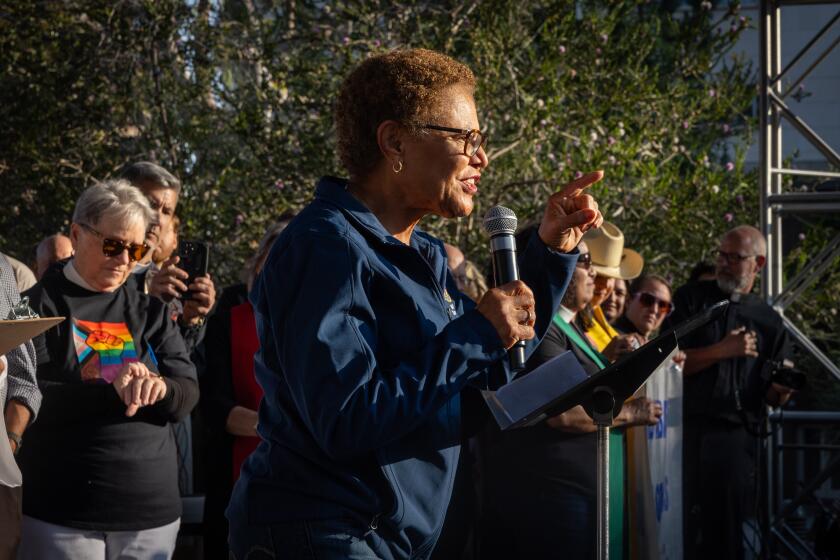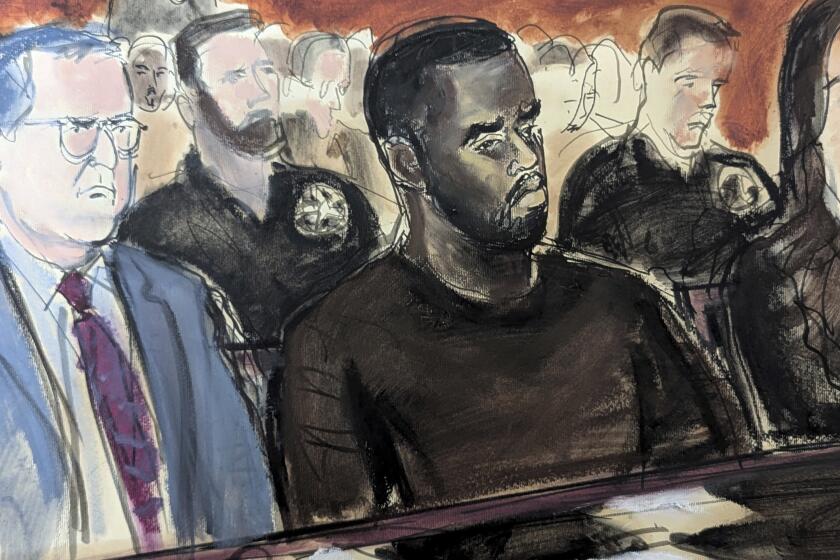Pay Now, or Pay Later
- Share via
FOLSOM LAKE — The day, Ed Taylor would recall, started “fairly normally.” Taylor is a senior operator at the Folsom Dam, which sits on the American River, east of Sacramento. Now, the day-to-day operation of a mammoth dam can have its moments, but generally the pace does not match, say, that of an air traffic control tower. Dams are passive objects. They sit there and hold back water. The challenge is in building them. After that, they can all but operate themselves.
On this day, two Mondays ago, Taylor was scheduled to slightly raise one of the dam’s giant spillway gates. This would unleash enough water to refill the river, which had been drained a bit downstream to allow for repair work. Taylor climbed out a catwalk above Gate No. 3. He pushed a button. The 50-by-42-foot steel gate swung upward six inches and, by design, stopped itself to allow Taylor to ensure everything was OK. “These gates,” he would explain, “are basically idiot-proof.” He pushed the button again, and the gate opened six more inches. Another check: Everything normal. He pushed again: Everything fine. He pushed again: Oops.
After the last movement, the dam started to vibrate. Taylor peered below and saw that the gate was being bent outward at an awful angle by the force of a lake full of water. This had never happened before, but the operator knew what it meant. It meant that the gate was broken, and that the lake was draining, and that Ed Taylor had seen his last fairly normal day for some time.
“Things happen,” the 49-year-old operator would say a week later with a shake of his head, sharing a bit of blue-collar philosophy as he watched the water cascade down from the still-unrepaired gate. “Things happen.”
*
For those familiar with Folsom Lake, the timing of this mishap is wildly ironic. For seven years, the lake--a key reservoir in the vast Central Valley Project--has served as California’s most photographed landmark of drought. Year after year, pictures of its cracked, drying lake bed ran coast to coast. This year, with a heavy winter, Folsom was full to the brim.
“We finally get a break,” said Ken Christensen, who runs the marina here, “and we’re telling everybody what a great year it is going to be, and then this happens.” He looked across a long expanse of exposed lake bottom that, two weeks ago, was covered with navigable water. He said it now would be converted into a parking lot. “There’s always a bright side,” he said. “At least now we’ll have ample parking.”
The cause of the break is unknown; only operator error has been eliminated. At first, water was escaping from the broken gate at 40,000 cubic feet a second--”enough water every second,” said a Bureau of Reclamation official, “to fill 150 swimming pools.” The flow has slowed as the lake level dropped, but before the hole can be plugged with steel planks more than 40% of the lake will have drained away--enough water to service 2 million Californians for a year.
Although there’s enough runoff behind other CVP dams to compensate for the lost water, the emergency repair job will cost 8- to 15-million U.S. Taxpayer Dollars. What nobody can say just yet, although certainly there are suspicions, is whether the accident could have been avoided with some fairly routine maintenance. Since 1988, for example, dam operators have been denied money needed to remove rust from gate bolts; they’ll no doubt get it now.
*
“Look at it this way,” said Tom Aiken, the bureau’s regional manager. “This dam was built 40 years ago. . . .It’s like those oil filter ads, where the mechanic says, ‘Pay me now, or pay me later.’ Here,” he said, pointing to the broken dam, “we are in the pay later mode.”
In a sense, the Folsom break seems part of a larger phenomenon unfolding across California. All those beautiful freeways and dams and public schools built in the truly golden days after World War II are starting to grow old and wear down. Only occasionally, as with the buckling of Interstate 5 last winter, are the collapses obvious. More typically, it’s a slow, subtle, barely seen process. California is not building new infrastructure, but it also is not maintaining the old.
The reasons are simple. Taxpayers are in no mood to dig deeper into their wallets. In turn, politicians see little advantage in campaigns to eliminate deferred maintenance: Much more fun to come in after the earthquake and buttress freeways than to do the job beforehand when no cameras are around. Thus, it would seem Ed Taylor has given the state a motto to carry into the next century: Things happen. Expect to hear it, again and again.
More to Read
Sign up for Essential California
The most important California stories and recommendations in your inbox every morning.
You may occasionally receive promotional content from the Los Angeles Times.














